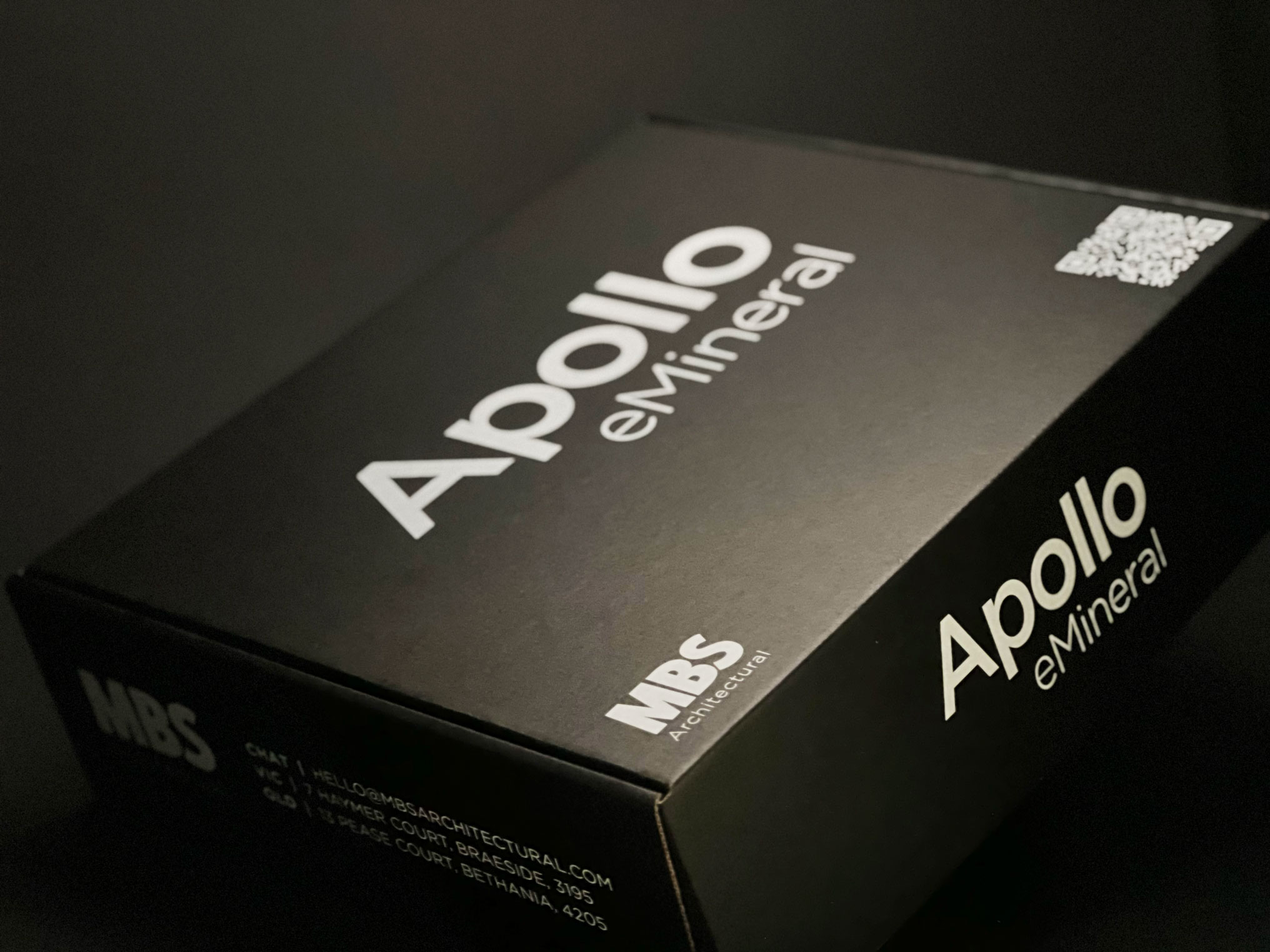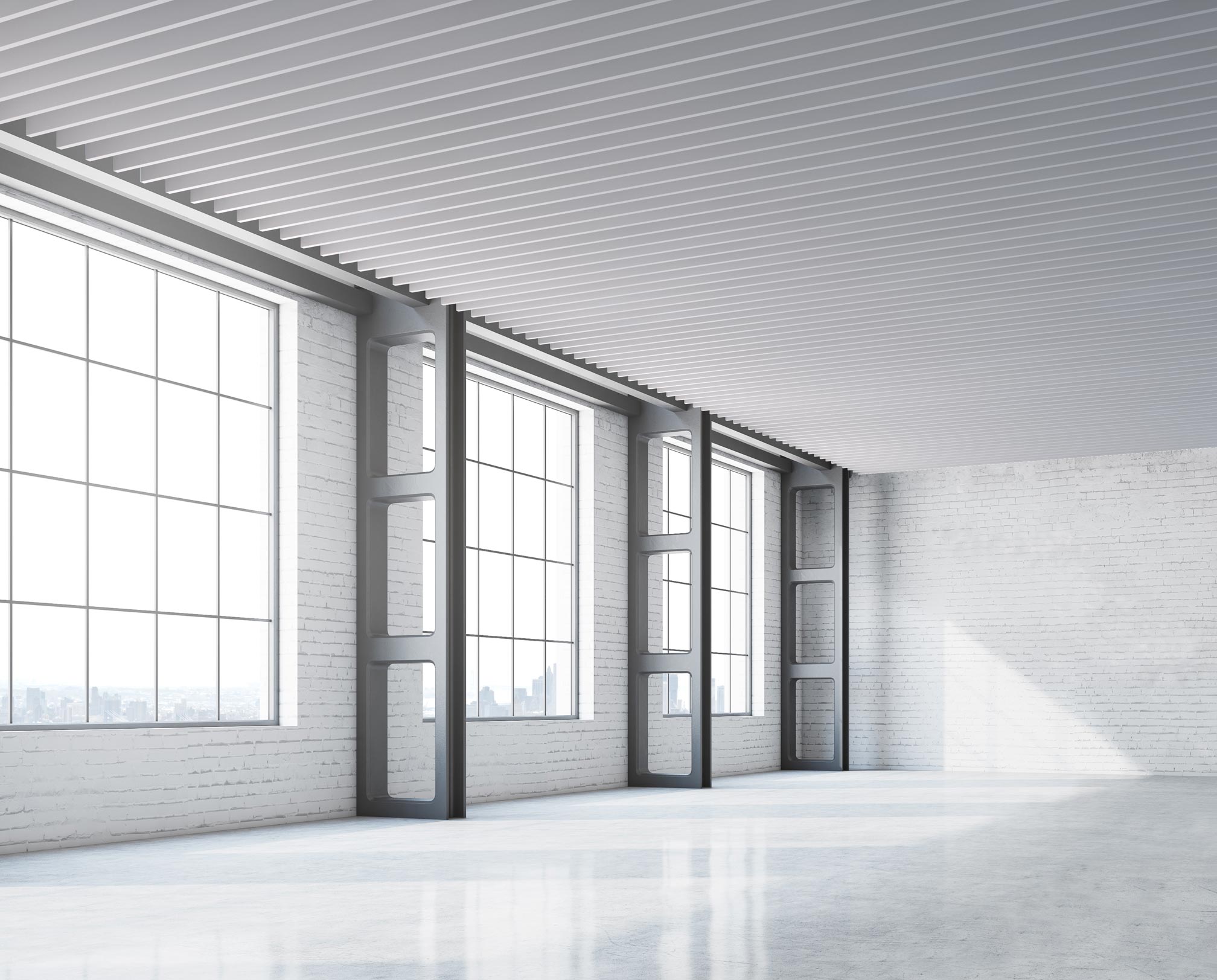
Suspended ceilings are often found in commercial buildings, such as office spaces or retail stores. They provide a decorative feature by covering the entire ceiling area. What makes them unique is that they are hung from the building's structure to a lower plane, creating a concealed ceiling plenum between the finished line of your suspended ceiling material and the building's structure.
This ceiling plenum assists architects and designers by allowing them to hide bulky items such as services, ducting, cable wires, cable provisions, bulk insulation, structural components, steel studs etc., above the ceiling line and away from the eyes of the user.
A typical suspended ceiling system consists of two main parts: the grid and the panels. The ceiling grid is a metal framework hung from the structure and designed to support the material (ceiling panels). Ceiling panels or tiles are manufactured from various materials; aluminium, vinyl, fibreglass, steel, or wood.
Note: Other names for suspended ceilings include a drop ceiling or a false ceiling.
What materials can I use in a suspended ceiling?
From a materials perspective, the design possibilities of suspended ceilings are endless. There is a huge range of ceiling tile options and ceiling finishes. In a traditional 'grid and tile' suspended ceiling, ceiling panel materials are constructed of Mineral Fibre, Aluminium, Metal, Vinyl, Fibreglass, Stainless-Steel or Timber.
Historically in Australia, we have seen that most suspended ceiling designs utilise some form of Mineral Fibre Tile. Ceiling Tiles have filled a specific need within the design community. They are a flexible building material that generally hits good levels of sound absorption and acoustic performance while traditionally being quite a cost-effective ceiling solution.
Excitingly, we are beginning to see a shift in Australian design trends to branch out from Mineral Fibre Ceiling tiles to other suspended ceiling materials that include Metal, Timber or some other form of acoustic absorbent material. This shift in design is linked to an increasing focus on design strategies that create environments that encourage a return to work. These strategies follow the principles set out in both human-centred and biophilic design.
Are suspended ceilings safe?
Building designs that include some form of suspended ceiling are incredibly popular across Australia in both High-Rise buildings and Public Buildings. Assuming the suspended ceiling has been installed in line with the manufacturer's recommendations and adheres to the NCC, then there should be no adverse risk to the inclusion of a suspended ceiling in your next project design.
Important factors that need to be included in suspended ceiling design include the average square meter weight of the finished product (eg. ceiling tiles) and the ceiling suspension system's ability to carry that weight.
In addition, and relevant for most ceiling applications across Australia, the suspended ceiling should be adequately braced for seismic conditions. AS 1170.4 outlines the various compliance requirements for seismic design within Australian projects.

How do you soundproof a suspended ceiling?
One of the significant benefits of a suspended ceiling is its ability to improve the acoustic performance of a space drastically. Typically the material used in the suspended ceiling will have some form of acoustic benefit. For example, a Mineral Fibre Ceiling Tile consists of a highly dense material that drastically improves sound absorption and attenuation.
In addition, another advantage of a suspended ceiling is that it creates a unique setting that allows building designers to add an acoustic insulation layer to the rear of the suspended ceiling material, significantly improving acoustic performance.
Perforating the suspended ceiling material is an incredibly popular design trend for improving acoustic performance. From here, there are typically two design intents that a building designer can choose from.
The first and more common method is 'blacking out' the perforations by laminating some form of acoustic scrim to the rear of the perforated ceiling panel. This creates a design intent that stops the user from seeing through the perforations to the ceiling plenum above.
The second method would be a design with the intent for the ceiling plenum to be visible through the perforations. In this instance, acoustic considerations are still critical to how a user experiences that space. We recommend that additional acoustic insulation should still be installed. However, the line this is treated moves from the initial rear of the suspended ceiling tile to being treated at slab level (e.g. soffit insulation/underside of the slab).
***For designs looking to incorporate some form of passive chilled beam cooling system, we recommend exploring a design intent where the perforations are left open. This allows the chilled beam cooling system to permeate through the penetrations to the user space below.
What are the advantages of a suspended ceiling?
In addition to improved levels of acoustic comfort and a concealed ceiling plenum, there are several other advantages to the inclusion of a suspended ceiling in your next project design.
A ceiling grid and ceiling tile installation will typically allow high levels of access to the ceiling plenum above. This is especially important on commercial projects where there are a large number of services hidden above that require frequent maintenance.
A suspended ceiling will generally also improve the energy efficiency of the building. The installation of the false ceiling effectively lowers the ceiling height of the user space. This lower ceiling height reduces the room air that requires temperature require, conversely improving energy efficiency and thermal comfort.
Who is MBS Architectural?
MBS Architectural is one of Australia's leading suspended ceiling product suppliers. Through our unique blend of manufacturing our own products and relationships with leading international manufacturers, we are a conduit for building designers to effectively use every form of material used in suspended ceiling design. Our breadth of range allows us to work on hundreds of suspended ceiling designs each year, allowing us to specialise in both ceiling design and unique project detailing.

Book a call with our architectural team today to get down into the detail. We are happy to chat through ideas, materiality and budget to find out how we can help you create the interiors you need. Simply drop us a note on hello@mbsarchitectural.com.au or call us on 03 9580 7800 to chat with our specification team.
Every material.one source.
Let's bring your project to life.










































